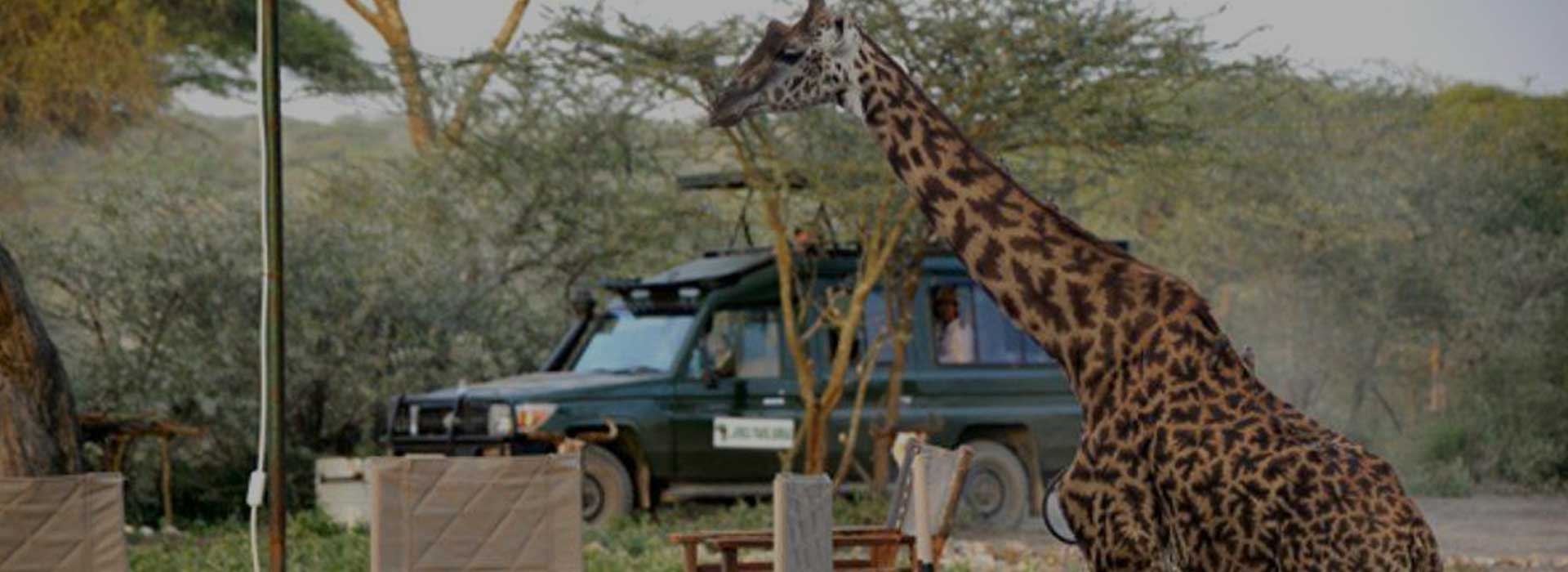

Tourism in the Ngorongoro Crater
Tanzania is a country with many tourist attractions. Approximately 38 percent of Tanzania's land area is set aside in protected areas for conservation. There are 16 national parks, 29 game reserves, 40 controlled conservation areas (including the Ngorongoro Conservation Area) and marine parks. Tanzania is also home to Mount Kilimanjaro, the highest point in Africa.
Travel and tourism contributed 17.5 percent of Tanzania's gross domestic product in 2016[3] and employed 11.0 percent of the country's labour force (1,189,300 jobs) in 2013. The sector is growing rapidly, rising from US $1.74 billion in 2004 to US $4.48 billion in 2013. In 2016, 1,284,279 tourists arrived at Tanzania's borders compared to 590,000 in 2005.
National parks
List of protected areas of Tanzania
Hippos in the Lake Manyara National Park in the year 2012
Tanzania has almost 38% of its land reserved as protected areas, one of the world's highest percentages. Tanzania boasts 16 national parks and is home to a large variety of animal life. Among the large mammals include the Big five, cheetahs, wildebeest, giraffes, hippopotamuses and various antelopes. Tanzania's most well known wildlife attractions are located in the northern part of the country and include the Serengeti National Park, Tarangire National Park and Lake Manyara National Park. The Serengeti National park encompasses the world-famous great migrations of animals.
The Serengeti National Park is the most popular park in the country and had the chance to host more than 330,000 visitors in 2012.
The north is also home to the Ngorongoro Conservation Area. The Ngorongoro Conservation Area includes the Ngorongoro Crater, which is an extinct volcanic caldera with lions, hippopotamus, elephants, various types of antelope, the endangered black rhinoceros, and large herds of wildebeest and zebra. The Crater also holds the Olduvai Gorge, it is considered to be the seat of humanity after the discovery of the earliest known specimens of the human genus, Homo habilis as well as early hominidae, such as Paranthropusboisei.
The western part of Tanzania includes the Mahale, Katavi, and Gombe national parks, the latter of which is the site of Jane Goodall's ongoing study, begun in 1960, of chimpanzeebehaviour. The country is also particularly rich in plant diversity, the Tanzania National Parks Authority has an entire national park the Kitulo National Park dedicated to flowers. There is a wide variety of biomass across the nation.
Mount Kilimanjaro climbing routes
An aerial view of Mount Kilimanjaro in the year 2009
Also known as the roof of Africa, Mount Kilimanjaro is a UNESCO World Heritage site and the highest peak in Africa. The mountain now a dormant volcano rises approximately 4,877 metres (16,001 ft) from its base to 5,895 metres (19,341 ft) above sea level. The mountain is located in the north of the country on the border with Kenya in the town of Moshi and is accessible via Kilimanjaro International Airport. The airport also provides a gateway for tourists to all northern safari circuits. The mountain is part of Kilimanjaro National Park and is the second most popular park in the country and roughly 20,000 visitors trek the mountain every year. The mountain is one of the most accessible high peaks in the world and has an average success rate of around 65%.
Tourism in Zanzibar
The Coastline of Zanzibar.
The Zanzibar Archipelago is a semi-autonomous region of Tanzania. Also nicknamed Spice Island, the archipelago is home to kilometres of white sand beaches and a cultural fusion of multiple cultures. The capital Zanzibar City still preserves the ancient city of Stone Town, the former capital of the Sultanate of Zanzibar. The town is home to numerous historical and cultural sites, some dating back to the 15th century. Zanzibar culture and architecture is built on a fusion of different cultures from Arabia, Persia, India and the coast of East Africa.
Often the trip to Zanzibar is the end of a tourists adventure into Tanzania after either a safari expedition in the north of the mainland or after a trek to the peak of the Kilimanjaro. There are hundreds of kilometres of beach as well as coral and limestone scarps along the coast allowing safe and significant amounts of diving and snorkelling. Apart from the beaches the island has the Jozani Chwaka Bay National Park which is a mangrove swamp and is the home for the red colobus monkey and home to 40 species of bird and 50 species of butterfly. Zanzibar is accessible Abeid Amani Karume International Airport and by ferry from Dar es salaam.
© 2019 Tanzania Bush Camps, All Rights Reserved Developed By Developed By Safari Marketing Pro